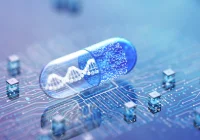Antibiotics have underpinned modern medicine, yet their reliability is eroding as resistance spreads. Infections that were once easily managed are increasingly difficult to treat and the human toll already numbers in the hundreds of thousands each year. Overprescription, agricultural overuse and long periods of underinvestment have depleted the pipeline while the threat from drug-resistant pathogens has grown. Against this backdrop, researchers at MIT report that generative artificial intelligence can design entirely new antibiotic molecules from first principles. By moving beyond the search of known libraries into unexplored chemical spaces, the approach produced candidates active against resistant gonorrhoea and MRSA in laboratory and animal models. The work signals a shift from chance discovery to directed invention, raising hopes for faster development cycles while underscoring the scale of scientific and economic hurdles that lie ahead.
From Serendipity to Deliberate Design
The classic arc of antibiotic discovery has been defined by serendipity. Penicillin emerged from an unexpected laboratory observation and streptomycin was isolated from soil bacteria. For decades researchers sifted through natural products to find compounds that happened to disable microbial rivals. That strategy has been largely exhausted and commercial interest has waned as companies weigh high development costs against limited returns and the inevitable erosion of efficacy through resistance. Early applications of artificial intelligence offered a partial remedy by scanning existing chemical collections. Discoveries such as halicin in 2020 and abaucin in 2023 showed that deep learning could spot overlooked structures within known libraries.
Must Read: AI and Antibiotics: Navigating a Complex Intersection
MIT’s latest work advances the field by recasting AI as a designer rather than a search tool. The team used generative models to construct novel molecular scaffolds that extend far beyond the boundaries of catalogued chemistry. Two outputs, NG1 and DN1, demonstrated activity against drug-resistant Neisseria gonorrhoeae and methicillin-resistant Staphylococcus aureus in controlled settings. Evidence from the programme indicates differentiated modes of action, with NG1 apparently undermining the outer membrane of gonorrhoea and DN1 disrupting MRSA’s cellular structure. The process compresses what previously required extended cycles of trial and error into a shorter, iterative workflow that can traverse immense chemical landscapes. As a result, the frontier of possible antibiotic architectures expands, opening routes to agents that did not exist until they were specified by algorithm.
Escalating Resistance and Clinical Risk
The imperative for new solutions is clear. A 2019 analysis attributed more than 1.2 million deaths each year to drug-resistant infections and projections point to a steep rise by mid-century. Global health authorities warn that routine surgery and chemotherapy could become hazardous if the risk of untreatable infection outweighs therapeutic benefit. Gonorrhoea illustrates the pace of erosion. Once responsive to penicillin, the pathogen has developed resistance to nearly all subsequent options, leaving clinicians with a single recommended class in cephalosporins. MRSA continues to circulate in hospitals and communities, exploiting lapses in hygiene and colonising skin and wounds. As effectiveness dwindles, the margin of safety narrows across everyday care pathways, from wound management to perioperative prophylaxis.
Within this context, AI-designed molecules matter because they could replenish an arsenal that has thinned to worrying levels. By inventing structures that bacteria have not previously encountered, the approach aims to sidestep entrenched resistance mechanisms. The ability to move from concept to testable candidates within months offers a chance to align development timelines more closely with microbial evolution. Yet early efficacy in laboratory systems and animal models is only the first step. The durability of activity, the potential for toxicity and the speed at which resistance might emerge all remain unanswered. Still, the demonstration that generative tools can create active leads against well-defended pathogens marks a substantive break from the limitations of natural-product prospecting.
Pipelines, Platforms and the Economics Problem
Momentum around novel discovery routes extends beyond one laboratory. Academic groups are exploring evolutionary archaeology by mining ancient DNA from sources such as Neanderthals and woolly mammoths to derive antibacterial peptides. Others are combining AI-driven design with structural biology to screen vast numbers of generated molecules and filter them down to a shortlist worthy of synthesis and testing. International collaborations are seeking to stabilise early development through public-private funding. Initiatives such as CARB-X aim to shepherd promising candidates towards the clinic, although progress is uneven and fragile.
The central constraint remains economic. Antibiotic development is expensive yet responsible stewardship suppresses sales to preserve effectiveness, which weakens the commercial rationale for sustained investment. MIT’s candidates exemplify both promise and fragility. NG1 and DN1 face a long preclinical path and may fail due to safety, efficacy or resistance liabilities. Nonprofit organisations linked to the discovery effort are working to move them forward but years of testing lie ahead. Without new funding models, including pull incentives such as market entry rewards or purchasing guarantees, breakthroughs risk stalling before they reach patients.
The broader significance may rest in proof of concept. Generative AI has expanded the accessible chemical universe and provided a blueprint for rapid invention that could be transferred to other domains. The same paradigm could be applied to antivirals, antifungals and novel therapeutic classes that rely on precise interactions with pathogen biology. The defining contest in infectious disease is temporal. Bacteria adapt faster than conventional pipelines can respond. If algorithmic design can shorten cycles from decades to years or even months, the balance may tilt back towards medicine, at least for a time.
Generative AI has introduced a credible path to antibiotics that are not found but authored, with early examples active against resistant gonorrhoea and MRSA. The shift from serendipity to deliberate design offers a means to explore chemical spaces that human intuition rarely reaches and to accelerate the translation of ideas into candidates. Yet scientific progress will only translate into clinical protection if the economic architecture supports it. For healthcare professionals and policymakers, the task is twofold: cultivate the technical capacity to generate high-value leads and construct funding mechanisms that carry them through development while preserving stewardship. If those pieces align, AI-driven design could help rebuild a sustainable defence against an escalating resistance threat.
Source: Digital Health Insights
Image Credit: iStock








